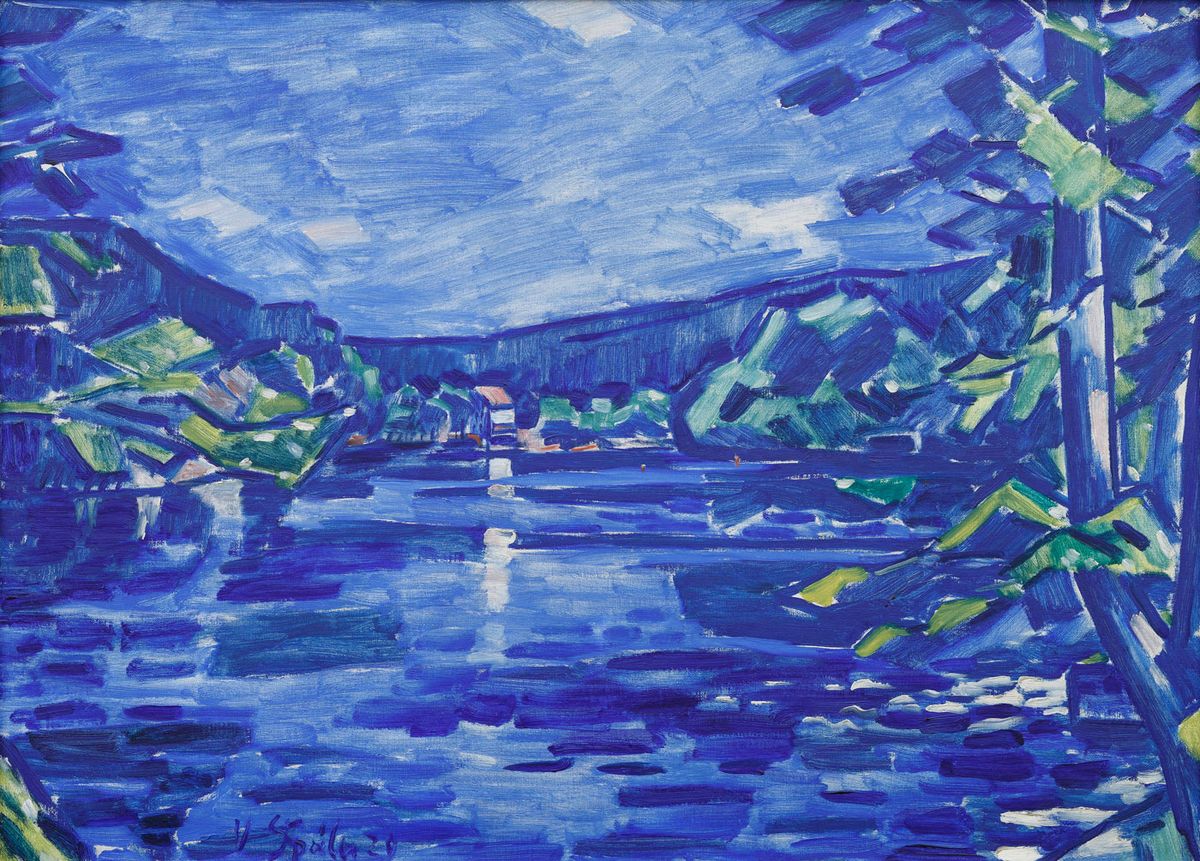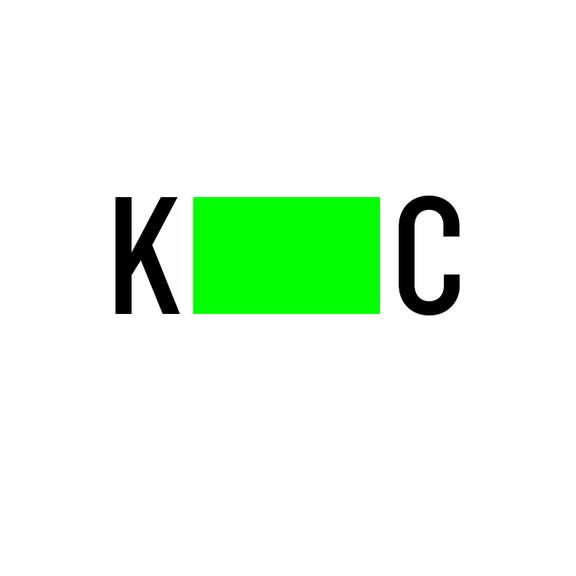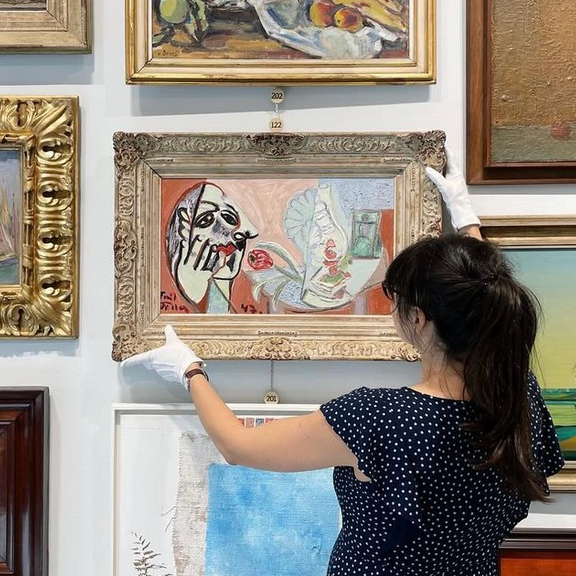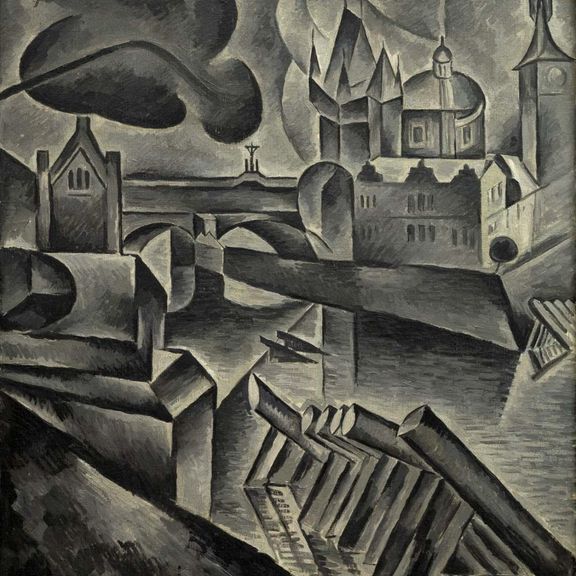
oil on canvas
1929
lower left
73 × 100 cm
framed
The Otava River is a paramount example of Špála’s so-called blue period, when the painter achieved a synthesis of his original artistic signature in capturing the South Bohemian landscape. The painter’s keen interest in the river landscape, which began with the Vltava, continued across the Sázava and Berounka rivers, and culminated in the Otava works, represents one of the most significant contributions to modern Czech landscape painting due to its unmistakable transposition of natural motifs into the realms of free, poetic vision. The work was created during the summer of 1929, spent in close proximity to Sulan’s Mill, a place to which Špála repeatedly returned, drawn by the dramatic character of the river landscape enclosed by steep slopes. In this case, however, we are probably looking at the nearby Tluček’s Mill on the left bank of the Otava, which was demolished during the building of the Orlík Dam. The dominance of ultramarine, spreading across the entire canvas, creates a harmonic scene in shades of blue, which is absolutely characteristic of the artist’s work of this period. Here, the painter applies his unmistakable, dynamic signature, where the brushwork synthesises the expressive point of departure from his early years with a seasoned, confident, and refined expression. This work marks the beginning of a series of variations inspired by the Otava, during which Špála’s perspective gradually focuses and simplifies, with the landscape emerging in robust masses, with hints of geometric stylisation. In contrast to a more dramatic variation on the same theme, On the Otava Before a Storm (oil on canvas, 1929, 89 x 116 cm, National Gallery in Prague, inv. no. O 3938), this variation is characterised by a particular balance and internal calm moving towards more an abstract expression with an emphasis on colour harmony and the rhythmic arrangement of the composition with the mill in the background, its outline rising from the calm surface of the river. The collector’s value of this excellent summer landscape of museum-worthy significance is accented not only by its original state and frame, but also its extraordinary provenance from the collection of Dr Adolf Lukl, a doctor and art collector from Prague’s Vinohrady district. The work can also be confidently considered a gem of Czech avant-garde painting. The painting is designated with the author’s number 443 in double parentheses on the verso. It appears in the artist’s inventory of works (E. Burget / R. Musil: Václav Špála, soupis díla /1885 – 1946/ [Václav Špála, Inventory of Works / 1885 – 1946/], Prague, 2002, p. 62, Na Otavě, modré [On the Otava, Blue]). It was also published in Jiří Kotalík’s monograph on Špála (Václav Špála, Prague 1972, p. 71). Assessed in consultation with Prof. J. Zemina and PhDr. R. Michalová, PhD. The expert opinion of PhDr. K. Srp is attached: “[...] If one were to name a time when Václav Špála was the most celebrated, when he imprinted himself on the minds of his supporters and the wider public, it would be the ‘blue’ paintings from the turn of the 1920s and 1930s. [...] This painting, one of an important series of similar motifs, can be considered one of the painter’s most mature. Špála opened the landscape space, turning the gaze on the surface of the river, on the hills that bordered it, and the sky, and unified it with various shades of blue, each time guided by a different brushstroke style, infusing the space with a powerful energy, almost reminiscent of nirvana. [...].”







